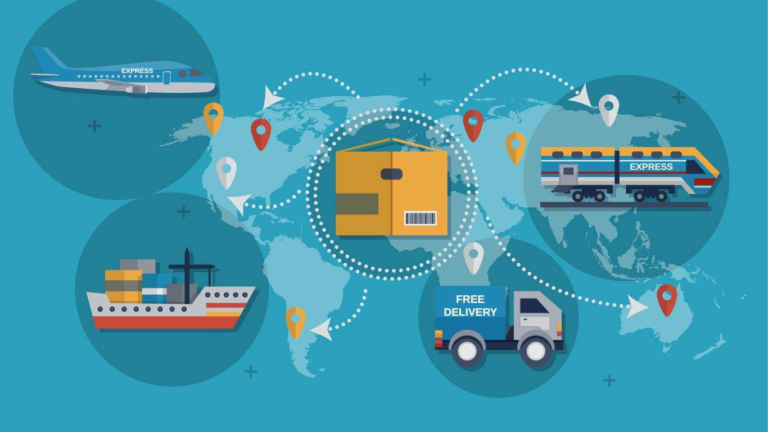In the intricate world of spirit production, crafting the perfect blend is only half the journey. The other, equally critical half, involves ensuring your meticulously produced spirit bottles reach their global destinations safely and intact. This is where the complexities of spirit bottle logistics come into play. How do you guarantee that these fragile, valuable assets are protected from the rigors of international shipping? This blog post delves into the challenges and solutions for secure global transportation of spirit bottles, highlighting the crucial role of specialized logistics expertise.
Table of Contents
1. Industry Knowledge: Mastering Secure Packaging Techniques
The journey of a spirit bottle from the manufacturing line to the consumer’s hand is fraught with potential hazards. Breakage, scratches, and other forms of damage can lead to significant financial losses and reputational harm. Therefore, implementing robust secure packaging techniques is paramount. Here are some key strategies:
•Individual Bottle Protection: Each bottle should be encased in a protective sleeve or bag to prevent surface scratches and scuffs during transit. This initial layer of protection is crucial for maintaining the pristine condition of the bottle.
•Shock-Absorbing Packaging: Utilizing materials that absorb shock and vibration is essential. This includes custom-fit foam inserts, inflatable air cushions, or molded pulp trays that cradle each bottle and prevent movement within the carton.
•Corrugated Dividers (Interlayers): Within the shipping carton, corrugated cardboard dividers create individual compartments for each bottle. This prevents bottles from clinking against each other, a common cause of breakage, especially during sudden movements or impacts.
•Export Fumigated Solid Wood Pallets: For international shipments, the choice of pallet is critical. Export fumigated solid wood pallets offer superior strength and stability compared to standard or plywood pallets. The fumigation process ensures compliance with international phytosanitary regulations, preventing the spread of pests.
•Inter-Bottle Protection on Pallets: Even on pallets, bottles can shift and rub against each other. Inserting corrugated dividers or slip sheets between layers of bottles on the pallet further minimizes friction and potential damage.
•Reinforced Shrink Wrap: Upgrading to a thicker, more durable shrink wrap for palletized loads provides enhanced stability and protection against external elements and minor impacts.
•Container Optimization – Airbags and Lashing: Inside the shipping container, proper loading and securing are vital. Airbags (dunnage bags) are inflatable cushions placed in voids between palletized loads to prevent shifting during transit. Lashing straps or bars can also be used to secure pallets to the container walls, especially near the doors, to prevent movement and damage upon opening. For container doors, a protective net or barrier can be installed to prevent goods from falling out when the doors are opened at the destination.
By combining these advanced packaging techniques, logistics providers can significantly reduce the risk of damage, ensuring that spirit bottles arrive at their destination in perfect condition.
2. Case Study: A Whiskey Brand's Journey to Zero Breakage
To illustrate the impact of effective logistics and packaging, consider the case of a prominent international whiskey brand. This brand faced significant challenges with product breakage and pallet damage upon arrival at their international distribution centers. The issues were impacting their supply chain efficiency and incurring substantial replacement costs.
Our team conducted a thorough analysis of their existing packaging and shipping processes. We identified several critical areas for improvement:
•Pallet Upgrade: The brand was using standard plywood pallets, which were prone to breaking under the weight and stress of long-distance international shipping. We recommended and implemented a switch to export fumigated solid wood pallets, significantly increasing the structural integrity of their shipments.
•Enhanced Inter-Bottle Protection: Within the palletized layers, bottles were directly contacting each other, leading to friction and breakage. We introduced corrugated paper dividers between each bottle on the pallet, creating a protective barrier that eliminated direct contact and absorbed minor impacts.
•Improved Shrink Wrap: The existing shrink wrap was insufficient for the demands of global transit. We upgraded to a thicker, more robust heat-shrink film, providing greater stability to the palletized load and better protection against external elements.
•Container Load Optimization: Inside the shipping containers, there was still some movement of pallets, especially near the container doors. We implemented the use of inflatable dunnage bags (airbags) placed strategically between pallets to fill voids and prevent shifting. Additionally, a protective net was installed at the container entrance to prevent any potential spillage of goods when the doors were opened.
Results: Following the implementation of these comprehensive packaging and loading enhancements, the brand reported a dramatic reduction in breakage rates, virtually achieving zero damage. The improved packaging not only safeguarded their valuable product but also streamlined their receiving process, leading to significant cost savings and enhanced customer satisfaction. This case exemplifies how a proactive approach to logistics and packaging can transform a challenging supply chain into a robust and reliable one.
3. Addressing Customer Pain Points: Reducing Breakage and Optimizing Costs
Beyond the technical aspects of packaging, many clients frequently ask: “How can we further reduce transportation breakage rates?” and “How can logistics costs be optimized without compromising safety?” These are valid concerns that directly impact profitability and operational efficiency.
Reducing Transportation Breakage Rates:
•Proactive Risk Assessment: A thorough assessment of the entire supply chain, from manufacturing to final delivery, can identify potential weak points. This includes analyzing transit routes, handling procedures at various touchpoints, and environmental factors.
•Customized Packaging Solutions: Generic packaging often falls short. Tailored solutions, designed specifically for the unique shape, weight, and fragility of spirit bottles, offer superior protection. This might involve custom-molded inserts, specialized cushioning materials, or even multi-layered packaging systems.
•Supplier Collaboration: Working closely with bottle manufacturers and packaging suppliers to ensure consistent quality and adherence to specifications is crucial. Defects in the bottle itself or in the packaging materials can compromise safety.
•Advanced Handling Protocols: Implementing strict handling protocols at every stage of the logistics chain, including proper loading, unloading, and warehousing techniques, can significantly minimize accidental damage.
•Real-time Monitoring and Feedback: Utilizing technology for real-time tracking and monitoring of shipments allows for immediate identification of issues. A robust feedback loop from receiving departments helps to continuously refine and improve packaging and logistics processes.
Optimizing Logistics Costs:
•Consolidation and Route Optimization: Consolidating shipments and optimizing transportation routes can reduce costs by maximizing container utilization and minimizing transit times. This requires sophisticated planning and coordination.
•Strategic Warehousing: Utilizing strategically located warehouses can reduce the need for long-haul transportation and provide opportunities for efficient cross-docking and distribution.
•Negotiating with Carriers: Establishing strong relationships and negotiating favorable terms with reliable shipping carriers can lead to cost savings. This includes exploring different shipping modes (e.g., sea freight vs. air freight) based on urgency and cost considerations.
•Insurance and Risk Management: While the goal is to prevent damage, having comprehensive insurance coverage is a critical risk management strategy. Understanding the terms and conditions of freight insurance can help mitigate financial losses in the event of unforeseen incidents.
•Continuous Improvement: Regularly reviewing logistics processes, analyzing data on breakage rates and costs, and implementing continuous improvement initiatives are key to long-term cost optimization. This might involve investing in automation, new packaging technologies, or staff training.
By addressing these pain points with a holistic approach that combines advanced packaging, meticulous planning, and continuous optimization, companies can achieve both reduced breakage and optimized logistics costs, ensuring their valuable spirit bottles reach their global markets efficiently and safely.
4. Conclusion: Your Partner in Global Spirit Bottle Logistics
In the competitive global spirits market, ensuring the safe and efficient transportation of your products is not just a logistical challenge—it’s a critical component of your brand’s success. From the delicate art of secure packaging to the strategic orchestration of a global supply chain, every detail matters.
Our expertise in spirit bottle logistics is built on a foundation of deep industry knowledge, innovative packaging solutions, and a proven track record of minimizing breakage and optimizing costs. We understand the unique demands of transporting fragile goods across continents and are committed to providing tailored solutions that meet your specific needs.
Ready to elevate your spirit bottle logistics? We invite you to explore how our comprehensive services and global supply chain capabilities can safeguard your valuable products and enhance your market reach. Partner with us sales@roetell.com to ensure your spirits arrive safely, every time, everywhere.




